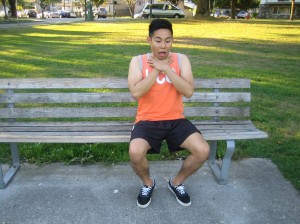If there is a blocked artery inside the heart, the individual might be suffering from coronary artery disease. This condition is triggered by the accumulation of cholesterol and fatty plaque inside the arteries, which is a condition called as atherosclerosis. Take note that atherosclerosis can disrupt with the flow of blood to the heart by causing the constriction or blockage of the arteries. If the heart does not receive adequate oxygenated blood, it will not function optimally which can lead to a heart attack. Individuals who have coronary artery disease can develop signs that can indicate that an artery inside the heart is obstructed. By enrolling in a first aid course, you will learn how to properly manage these symptoms.
Breathing difficulty
If there is a blocked artery inside the heart, breathing difficulties are likely to occur. Once the individual experiences shortness of breath, he/she will find it difficult to climb up stairs or carry out regular daily activities. If the heart is not given enough supply of blood, fluid will start to accumulate inside the lungs and result to severe breathing problems. It is important to seek emergency care if the individual suffers from breathing difficulty since this can indicate heart failure or a heart attack.

Angina
Angina is one of the prevalent symptoms of a blocked artery among individuals who have CAD. Individuals who have angina usually complain of discomfort or pain in the middle of the chest. The pain experienced can oftentimes be described as a sensation of numbness, heaviness, burning or aching inside the chest. Always remember that the chest pain can radiate to other parts of the body if there is a blocked artery. The pain in the chest can radiate to the back, arms, neck, stomach or jaw. In case the individual experiences the symptoms of angina, immediate medical care is vital since this can also indicate a heart attack.
Dizziness
Once there is a blocked artery inside the heart, it disrupts the oxygenated blood from reaching the brain. If this occurs, dizziness, fainting or loss of consciousness can occur. Severe weakness or anxiety can also indicate a blocked artery in some cases. Immediate medical care is required if any of these develop.
Nausea
In some individuals who have a blocked artery, they experience nausea. The other accompanying gastrointestinal symptoms that you should watch out for include vomiting and abdominal pain.
Erratic heartbeat
If an individual as an erratic heartbeat, it can indicate a blocked artery inside the heart. In case the heart does not receive adequate blood due to the obstruction, it will pump at a faster rate as an attempt to draw in more blood to the heart. Once the heart beats rapidly, the individual can experience dizziness or chest pain.
